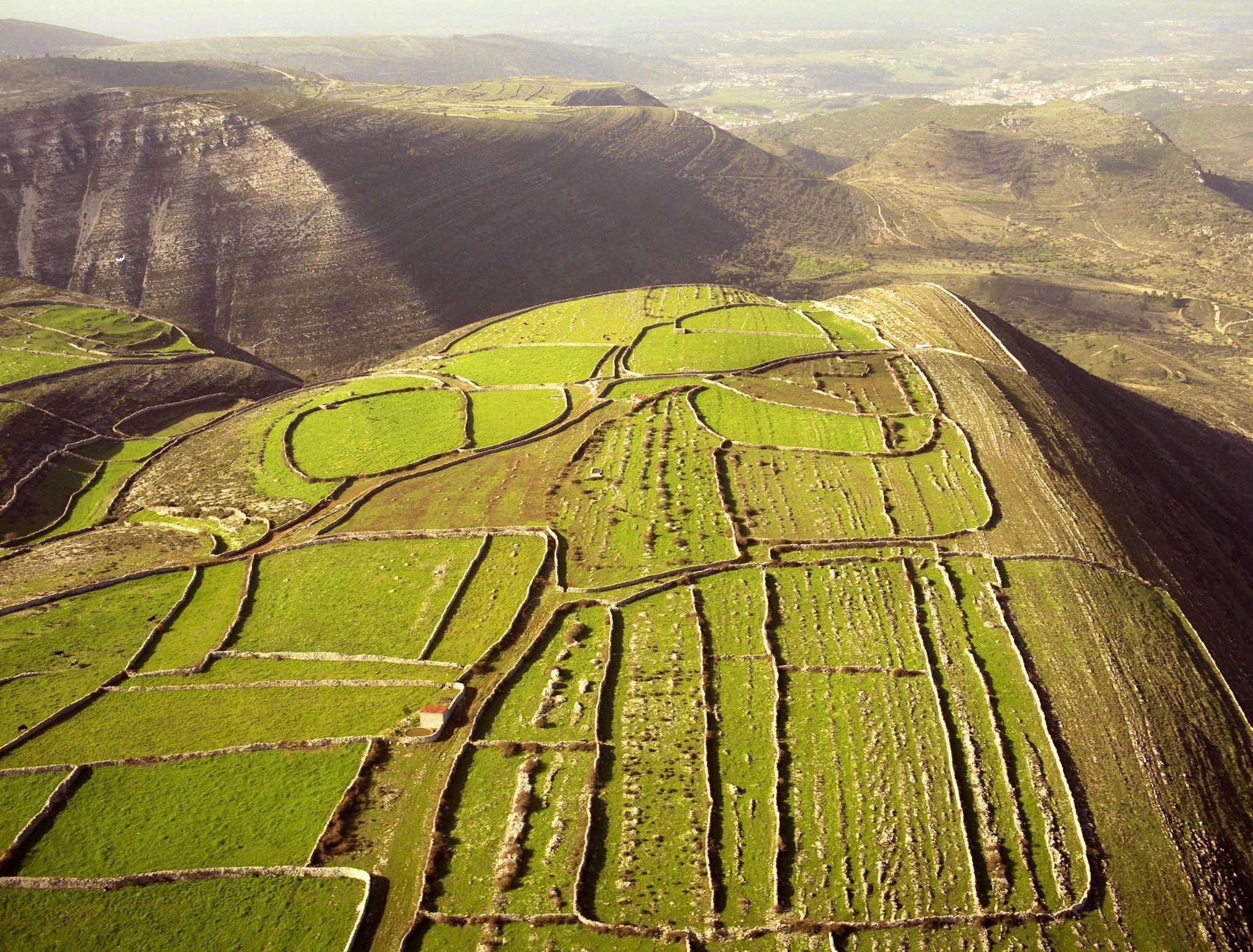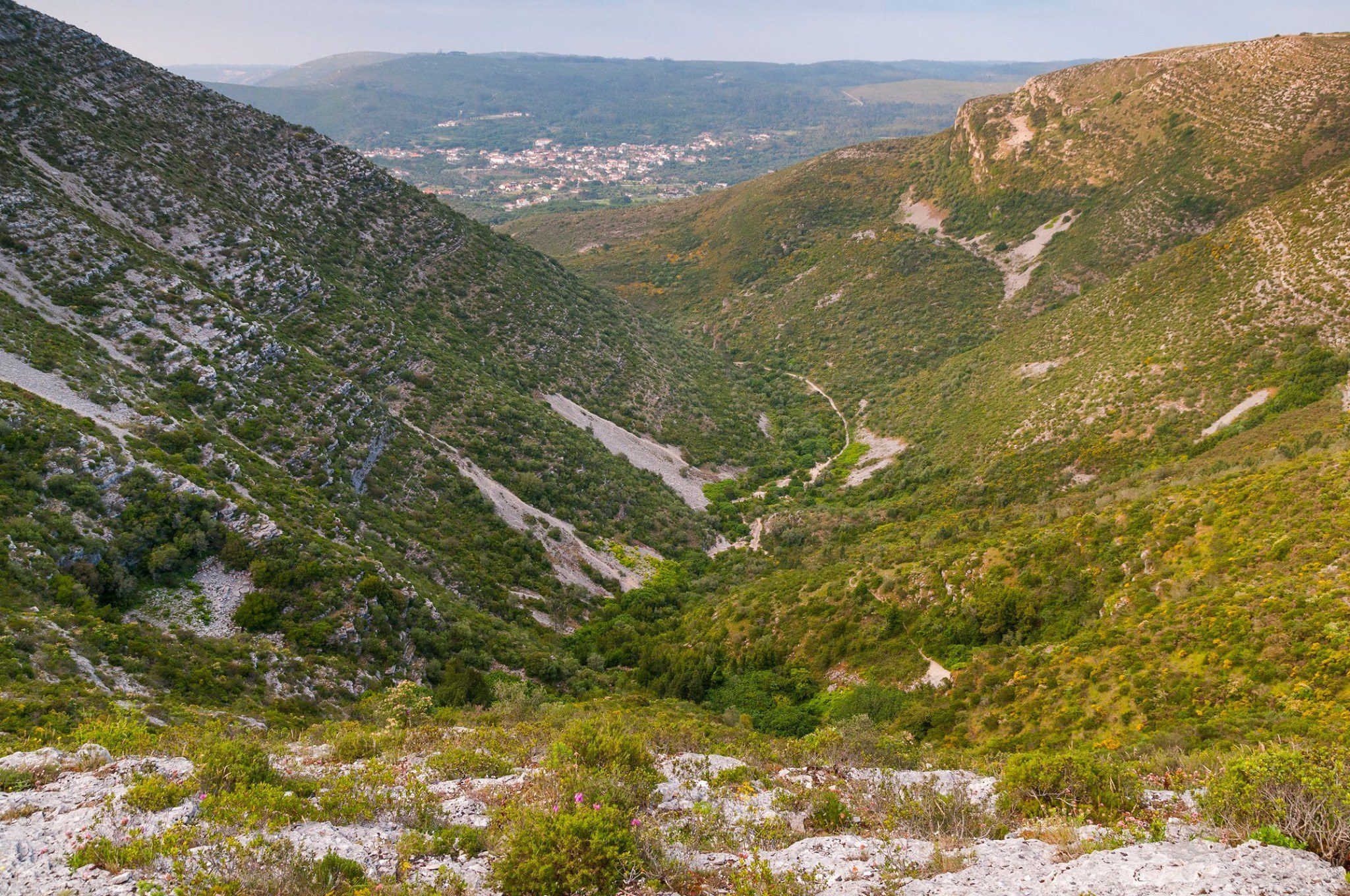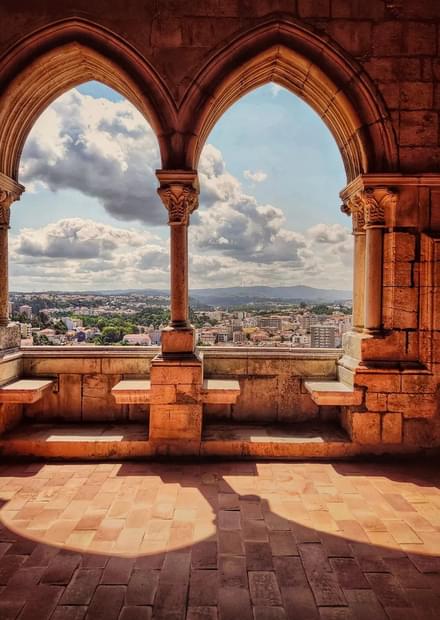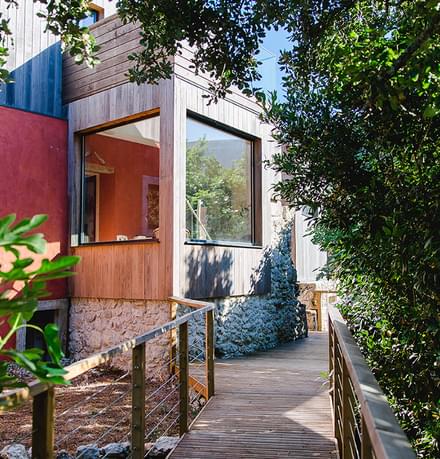The greatest riches of the Serras de Aire e Candeeiros Natural Park are hidden within its interior. This chalk massif is a paradise for speleologists who will be able to discover grottoes and ravines in its depths, with surprising rock formations that have been sculpted by water over time.
The puzzle of grey stone walls looking over the green meadows is the trademark of the Natural Park of Serra de Aire and Candeeiros. They go by the name of “chousos” or “cerrados”, walls of dry stone, “maroiços”, the pile of stones left from the process of removing them from the soil and “casinas”, wonderful stone houses built by the shepherds so valued and protected by the local communities nowadays.
At the surface, there are neither rivers or streams. The landscape is barren, dotted here and there by boulders, fissures and slopes. Notwithstanding this arid appearance, there is a rich and varied range of animal life, including 18 species of bats (the symbol of the Park) that find ideal shelter in the various grottoes.
In this Natural Park one can easily spot about 35 different species of orchids between February and April !
Close to the River Maior, we find the rock salt mines, where it is possible to see salt-extraction activities, in accordance with management and utilisation principles that have been used for over eight centuries.
On the eastern flank of the Serra de Aire, around 10kms from Fátima, we find the world’s largest and most important collection of sauropod dinosaur footprints from the mid Jurassic period (175 million years old) - Vale dos Meios. Several of the 20 or so tracks, discovered by chance in a former quarry – the “Pedreira do Galinha” – measure over 100 m in length. The site includes some of the largest and clearest footprints known to man, that attain up to 95 cm in length and 70 cm in width, which gives an idea of the dimension of the largest of beings that have ever inhabited the planet.
In order to get to know this protected area, visitors may choose between the 16 pedestrian walks proposed by the Park. If they prefer a more original and less tiring approach, they may go on a horse ride, organised by the excursion companies in the zone.
Fórnea walking trail
The formation of the Limestone Massif started 200 million ago, consisting of carbonated rocks with sea origin. A unique geological structure in Portugal and one of best kept in Europe: the 250 m-high amphitheatre Fórnea with 500m diameter. This is the head of Fórnea river stream excavated in limestone dating back to the Inferior Jurassic.
Along the walking trail, you can watch different kinds of vegetation, basically related to micro-climate changes and soil nature, such as: big fig trees (Ficus carica) as well as hawthorns, laurel (Laurus nobilis) and evergreen shrub (Arbutus unedo).
Here you can also find two precious examples of a rare tree in Portugal: Montpellier Maple (Acer monspessulanus) with green and yellow broad-leaved leaves, characteristic of a Mediterranean vegetation.
Location
Google Maps




























